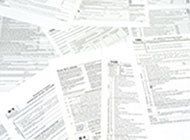 The IRS has issued an updated version of Publication 590-B, Distributions from Individual Retirement Arrangements (IRAs). The new version is to be used in preparing 2020 returns.
The IRS has issued an updated version of Publication 590-B, Distributions from Individual Retirement Arrangements (IRAs). The new version is to be used in preparing 2020 returns.
There are many new features for 2020 reporting.
Coronavirus-Related Distributions. Recent legislation contains special rules that provide for tax-favored withdrawals, income inclusion, and repayments for certain individuals who were impacted by the coronavirus in 2020.
Expansion of Special Rules for Qualified Disaster Distributions and Repayments. The special rules for qualified disaster distributions and repayments are expanded to apply to disasters described in the Taxpayer Certainty and Disaster Tax Relief Act of 2020. A qualified disaster now also includes a major disaster that was declared before Feb. 26, 2021 and that occurred on or after Dec. 28, 2019, and on or before Dec. 27, 2020, and continued no later than Jan. 26, 2021. However, this change does not include a major disaster that has been declared because of COVID-19.
Required Minimum Distributions (RMDs). For distributions required to be made after Dec. 31, 2019, the age for beginning mandatory distributions is changed to age 72 for IRA owners reaching age 70½ after Dec. 31, 2019. The required beginning date for IRA owners who haven't reached age 70½ by the end of 2019 is April 1 of the year following the year of the owner’s 72nd birthday.
RMDs Not Required in 2020. The requirement to make RMDs in 2020 was temporarily waived in response to the coronavirus pandemic. Whether that distribution is one in a series of RMDs or the initial RMD that would be required by April 1 for a taxpayer reaching age 70½ in tax year 2019, no RMD is required.
Modification of Required Distribution Rules for Designated Beneficiaries. There are new RMD rules for certain beneficiaries who are designated beneficiaries when the IRA owner dies in a tax year beginning after Dec. 31, 2019. All distributions must be made by the end of the 10th year after death, except for distributions made to certain eligible designated beneficiaries.
Qualified Birth or Adoption Distribution. Beginning in tax years after Dec. 31, 2019, distributions can be taken from an IRA without it being subject to the 10% additional tax for early distributions, if that distribution is for a qualified birth or adoption.
Qualified Plan Loan Offsets. In order to be a qualified plan loan offset, the loan, at the time of the offset, must be a loan in good standing and the offset must be solely due to: (1) the termination of the qualified employer plan, or (2) the failure to meet the repayment terms is because the employee has a severance from employment. If one meets the requirements of a qualified plan loan offset, one has until the due date—including extensions—to file a tax return for the tax year in which the offset occurs to roll over the qualified plan loan offset amount. This revision is effective for tax years beginning Jan. 1, 2018.
- Log in to post comments
